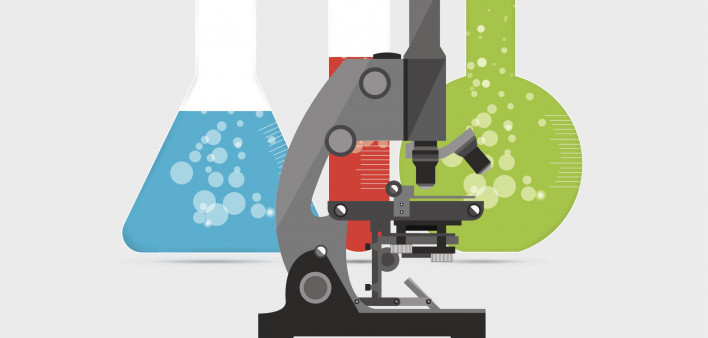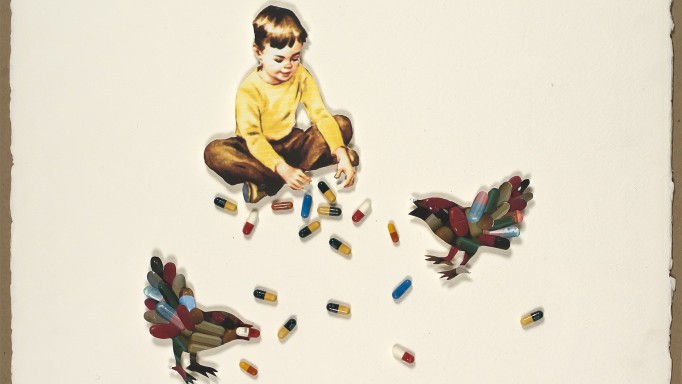Everything we know about HIV prevention and treatment comes from research involving people at risk for or living with HIV. We have clinical trial volunteers to thank for highly effective pre-exposure prophylaxis (PrEP), well-tolerated antiretroviral therapy and advances in HIV vaccine and cure research.
Clinical trials are experiments that test new treatment or prevention approaches. For example, many trials evaluate whether new HIV medications or cure strategies are safe and effective. Studies often compare new therapies against existing options to determine whether they work equally well or better, are more convenient or have fewer side effects.
The Drug Development Process
The process of developing new medications is lengthy and expensive—it can take a decade or more for an experimental drug to go from the laboratory to pharmacy shelves.
Preclinical: Most drug candidates first undergo in vitro (Latin for “in glass”) testing in a laboratory. For example, researchers will assess whether a compound kills HIV in a petri dish. However, antiviral activity in the lab does not necessarily mean a drug will work in the body. If in vitro tests are promising, the compound may then be tested in mice or other animals. But again, animal results do not always show how well a drug will work in humans.
Phase I: If a drug candidate still looks promising, researchers submit an Investigational New Drug application to the Food and Drug Administration (FDA) so it can enter clinical trials. Early safety trials usually include 10 to 100 participants, often starting with healthy volunteers. These trials look for common toxicities or side effects and collect information about pharmacokinetics, or how a drug is absorbed, processed and eliminated in the body. Researchers try to determine which dose of the drug will provide an optimal balance of activity and safety.
Phase II: Mid-level trials typically include a few hundred participants. They are designed to see whether a treatment still appears safe in a larger group and to gather preliminary information about efficacy, or how well it works under ideal conditions. Trials are sometimes divided into Phase IIa (pilot studies) and Phase IIb (small, controlled studies). In some cases, trial stages are combined—Phase I/II or Phase II/III—to accelerate development.
Phase III: The largest and longest trials, usually involving several hundreds or thousands of participants, aim to determine how well a new therapy works in the population that will use it in the real world. This often involves comparing it against existing therapies or a placebo.
Researchers continue to monitor safety, as less common side effects may show up only after a drug is used by many people over a longer period of time. Data from major Phase III studies, known as pivotal trials, may be submitted to the FDA to support a New Drug Application for approval.
Phase IV: After a drug has been approved and is commercially available, post-marketing studies are done to see how well the medication works under real-world conditions and to determine its long-term safety and efficacy. These studies may also compare approved treatments against one another to find which works best.
Mechanisms are in place—in part thanks to the work of AIDS activists—to speed up access to therapies for life-threatening conditions. The FDA may grant accelerated approval to therapies that fill an unmet need, often based on Phase II results. Such approval is typically based on so-called surrogate endpoints, such as HIV viral load, that can be assessed sooner than survival. Drugs that receive accelerated approval must still complete Phase III testing to confirm that their early promise holds up with longer follow-up.
People with serious conditions who are unable to enroll in clinical trials may seek expanded access to an experimental therapy—also known as compassionate use—if there is no satisfactory treatment available and the probable benefits outweigh the risks.
Trials for new prevention methods follow a similar pathway, but the safety bar is higher because they will be used by healthy people. Other types of trials assess behavioral interventions, for example, an exercise routine or smoking cessation program.
HIV cure trials are more complex and may involve greater risk. In order to determine whether an intervention leads to long-term remission, participants may temporarily stop antiretroviral therapy in an analytical treatment interruption. Although treatment interruptions are carefully monitored, a person’s viral load may increase, which could lead to disease progression and raise the risk of HIV transmission.
Clinical Trial Design
A good design is essential for ensuring that a clinical trial provides reliable information about a new therapy’s safety and effectiveness. In particular, trials should include enough participants and last long enough to produce statistically significant results, meaning that the findings are unlikely to be due to chance alone. And it is important that trials enroll the full range of people who will use the therapy in the real world, including men, women and transgender people and people from diverse racial and ethnic groups.
The relevant information about how a study will be conducted, its statistical methods and its goals (known as endpoints) should be specified in advance in the trial protocol. Institutional Review Boards at universities and hospitals ensure that clinical trials are ethical, and some studies have Community Advisory Boards that include people living with HIV.
A study’s enrollment criteria describe who may participate. Required characteristics and qualifications are known as inclusion criteria, while those that disqualify potential participants are called exclusion criteria. HIV trials typically specify viral load and CD4 count thresholds and prior treatment history. People being treated for the first time are known as treatment-naive, and those who have used earlier therapies are treatment experienced. Some trials exclude people with specific coexisting conditions.
The gold standard for drug testing is the prospective randomized controlled trial. A prospective, or forward-looking, study selects a group of participants and follows them over time, while a retrospective study looks backward at events that happened in the past.
A controlled trial means participants are randomly assigned to receive the experimental therapy or a comparison intervention, known as a control. This could be a competing new drug, the currently available standard of care or—if no good options are available—a placebo, an inactive mock therapy, such as a sugar pill or saline injection. Leaving people untreated in a placebo arm is considered unethical if existing treatments are available.
Randomization means that any trial participant has an equal chance of ending up in any study arm. This helps ensure that the groups receiving different treatments or a placebo are otherwise similar. This minimizes the effect of confounding factors that could influence the results. For example, if an experimental treatment arm contains people with more severe disease, while the control group contains people with milder disease, the results would not be comparable. But randomization also means that not everyone who joins a trial will receive the experimental therapy.
Double-blind studies are another way to reduce bias, or unintentional favoritism. In these studies, neither the investigators nor the participants know who is assigned to which treatment arm. In open-label studies, in contrast, everyone knows who is getting which therapy.
As clinical trials progress, a Data and Safety Monitoring Board will look at interim results. Researchers may report preliminary findings at scientific conferences or in medical journals. If preliminary data indicate that a drug is either harmful or highly beneficial, the trial may be stopped ahead of schedule.
Joining a Clinical Trial
Joining a clinical trial can be a good way to gain access to promising new therapies. Although many people living with HIV today have an abundance of effective and well-tolerated treatment options to choose from, this is not true for everyone. Some people experience side effects or have trouble taking existing drugs consistently, and others have developed resistance to approved meds. Another motivation is altruism—knowing you are contributing to science and helping others.
But it is important to weigh the potential benefits and possible risks of trial participation. Benefits can include early access to promising new therapies, free drugs and lab tests, and care delivered by leading experts. Drawbacks can include time-consuming study visits, the need to stop or forgo other therapies and the risk of side effects. And in a randomized trial, you might not get the experimental treatment.
Ask your HIV care team whether a clinical trial might be a good option for you. The National Institutes of Health’s ClinicalTrials.gov website lists open trials for all conditions. Patient advocates and support groups can also be a good source of information about available studies.
When considering a trial, learn all you can about the therapy being tested and what other options are available. Ask about the frequency of study visits and whether the trial provides reimbursement for travel and other expenses. Find out what will happen after the trial ends. In some cases, all participants will eventually receive the experimental therapy even if they weren’t originally randomized to that group, and some studies include long-term follow-up that can last for years.
Prior to enrollment, you will undergo eligibility screening, which includes questions about your health and medical history and tests to determine whether you meet the study’s inclusion and exclusion criteria.
Before agreeing to join, you should be given information about all aspects of the trial in language you can understand. Don’t be afraid to ask questions! You will need to sign an informed consent document, but remember that this is not a contract—you have the right to withdraw from a trial at any time for any reason.
If you do decide to join, study visits will typically involve various tests and questions about adherence, side effects and your overall quality of life. The researcher in charge of a clinical trial, called the principal investigator, usually works with a team of study coordinators, nurses and social workers. Get contact information for someone you can get in touch with at any time. If your regular care providers are not conducting the trial, it’s important that they communicate with the study team.
Although medical research is governed by regulations to ensure that it is ethical and as safe as possible, trials of new antiretroviral drugs, HIV prevention methods and cure strategies can’t offer guarantees. Researchers do not yet know how effective experimental therapies will be, and they can’t rule out unforeseen adverse events. But despite this uncertainty, clinical trials can be a gateway to better prevention and treatment for yourself and other people living with HIV.
Last Reviewed: January 5, 2023














